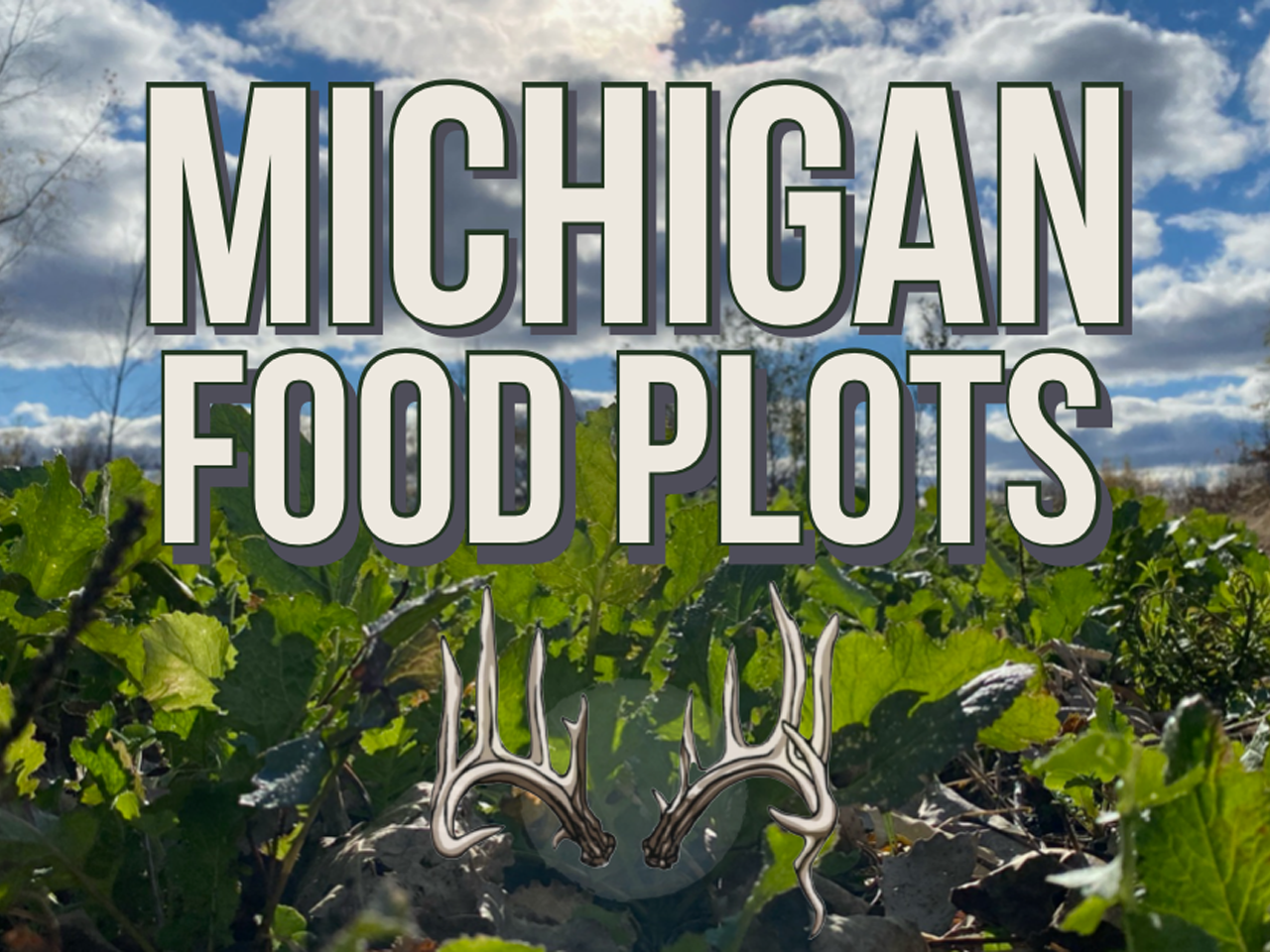
Michigan Food Plots
Planting food plots for wildlife or livestock in our home state of Michigan can be easy, fast, and an excellent way to introduce your family to the great outdoors. All you need is space to plant in, quality food plot seed, and a good plan based around well timed rain. Contrary to popular belief, tons of expensive fertilizer and heavy equipment with fancy attachments are not always required to grow successful food plots. We will go in more detail about planting options later but, it is first important to understand that Michigan (and many other states in the northern USA) experience a much shorter growing season when compared to southern states whom have warmer climates. The southern growing seasons can be up to four months longer than the northern growing seasons. This is a big deal considering that the average northern growing season is only around six months. As this is the case, the plan for planting food plot seeds in cool growing zones like Michigan needs to be adapted accordingly.
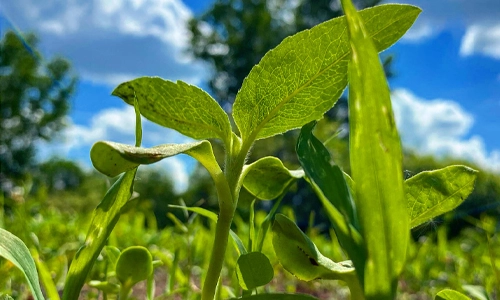
When planting food plots for whitetail deer, turkey, pheasants or any other critters we must realize that there are three different opportunities to sow food plot seeds. Particular plant species are chosen based on the season in which you are sowing the seeds and growing the plants. The very first chance in Michigan to start sowing seeds to grow food plots begins in March and is called “frost seeding”. The theory behind frost seeding food plots is that in early spring, the fluctuating temperatures cause the top layer of the ground to open up with warm temps and then, the soil contracts when the temperatures steeply drop down at night. When food plot seed is applied to the top layer of the soil line then, the repeating cycle of opening and contracting will pull the seeds into the soil (think of it like the pores of a sponge which are being squeezed open and closed, over and over). This results in the seeds being already in place and ready to germinate as soon as the soil temperatures warm up to the appropriate temperature. With the seed able to immediately germinate then, this allows for a quick establishment of the desired food plotting area and will suppress any other non-desirable plants (weeds) that would otherwise fill the open void left in that planting zone. The most common types of plant species used for frost seeding food plots in Michigan would be clover and cereal grain rye (NOT ryegrass). These seeds can be directly dropped right on top of the snow without any issue.
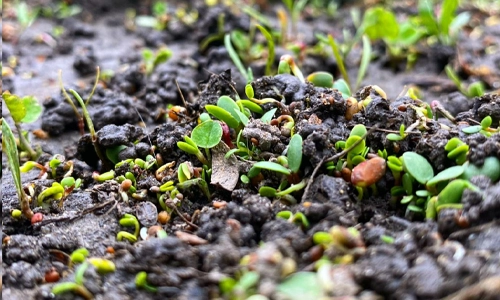
The second opportunity to plant food plots comes in early spring once the soil temperatures are above fifty-degrees Fahrenheit and is known as a “spring food plot” (sometimes referred to as a “summer food plot”). In Michigan, this type of food plot would be planted and grown in the months of April through June. Common “spring food plots” or “summer food plots” would contain plants like soybeans, sunflowers, buckwheat, cowpeas, alfalfa, and corn.
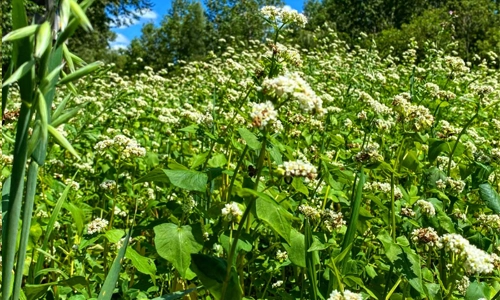
A food plot sowed in the final planting window of the year is consider a “fall food plot”. This kind of food plot would typically be planted in Michigan during the months of August and September. The common plant species used in Michigan “fall food plots” would include radish, turnip, clover, cereal grain rye, winter wheat, triticale, oats and sugar beets. These cold hearty plants will grow throughout fall and will remain available through late winter as high quality forage for your wildlife (or until it’s ate down by the local hungry whitetail deer herd). A fall food plot is viewed as the most common and valuable as hunters can use food plots as a hunting tool to harvest more wild game.
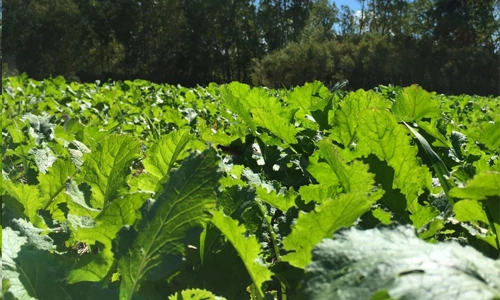
It is also important to note, that it is not necessary to plant seeds during all three of the mentioned planting opportunities. However, having beneficial plant species growing in your plotting areas for as many growing days out of the year as possible will dramatically improve your soil health, suppress/prevent non-desirable plants (weeds) from establishing, plus your wildlife will benefit from the food sources and cover provided by the lush nutrient rich food plot plants. On the other hand, if your time is stretched thin and you can only make it to your food plot growing locations a limited amount of times then, it is completely acceptable to plant during which ever opportunity that you can make possible. There are many Michigan hunters whom only plant fall food plots and are still very successful harvesting trophy game. Other outdoor loving men and women choose to frost seed, skip spring food plots and then, come back and plant fall food plots. However, the truly ultimate food plotter’s passion will drive them into the outdoors and they will capitalize on all three planting opportunities.
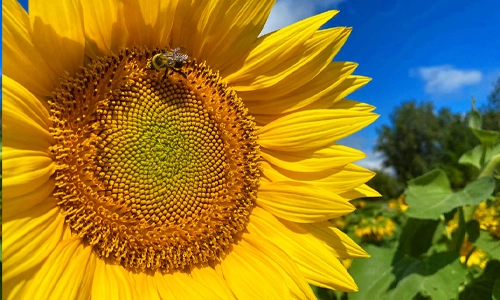
As you could probably imagine, we here at Crooked Bend think about food plots every single day of the year (literally). We also understand (the sad but true fact) that common folk do not think about food plots as much as we do. As this is the case, we would like to take you through an entire growing year of a food plot planted in Michigan (planting in all three sowing opportunities). Following a similar plan to the one we will describe will help your future food plots yield more tonnage of high quality foliage, even if dealing with a shortened growing season.
Living in Michigan, we know that the months of January and February mean frigid temperatures, large amounts of measurable snow and super slick icy roads. Some folks say this is the perfect time to pack up the ice fishing shanty and hit the iced over lake to hook up with some tasty perch (and other things if you’re in Hudson, Ohio). We, on the other hand, say that this is a great time of the year to start thinking about your food plot plan! The cold winter air provides a great opportunity to chill out, dial back and think about the past years food plotting and hunting successes or opportunities. Use tools like Google Earth or printed maps to review your entrance/exit pathways, wild game trails, blind locations, and sizes of your food plots. Color the maps with different colors representing different food plot blends, wildlife bedding areas, watering holes, and travel corridors. Noting the acreage or square foot size of each of your food plots, along with the amount of light that each plot location receives will be helpful when considering the types and amounts of food plot seed you decide to purchase later on. Use the January and February winter downtime to your advantage and get a good game plan on paper. Ultimately this will translate into ultra successful food plot results.
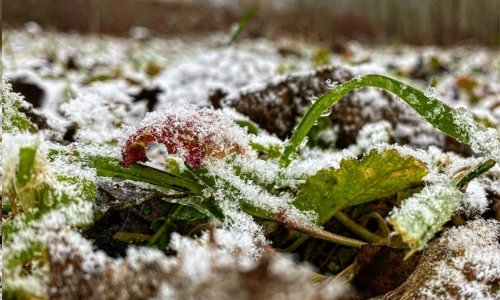
The weather in Michigan (especially in early spring) is incredibly unpredictable but, in a typical year, early March will present the first opportunity to frost seed food plots. The daytime high temperatures should be reaching in the forty degrees Fahrenheit and the night time lows will drop below freezing. We recommend using a cold-hearty and diverse clover mix (such as our “Four Clover Combo”). Clover seeds are very tiny which allow them to have excellent seed to soil contact. A high quality cereal grain rye (NOT ryegrass) will offer the benefit of being able to germinate at very low temperatures as well. The cereal grain rye that Crooked Bend offers in our “Last Resort Blend” will germinate in temperatures as cold as thirty-four degrees Fahrenheit. The thawing ground that the month of March also offers makes it an excellent time to collect soil samples from your food plots and pastures. Submitting your soil samples to a company like Crooked Bend will allow for you to see the elements that are actually in your soil. When you know what is in your soil then, you know what (if anything) should be added to it in order for your crops to go to their full potential. The price of a soil test will be dramatically offset by the money saved with an accurate and calculated soil amendment application. It is a lot easier to hit a target (in this case, healthy soil) when you can actually see what you are aiming at.

The next seed sowing opportunity arises once the soil temperatures reach fifty degrees Fahrenheit. At this soil temp you can begin to plant your “spring food plot”, (also known as a “summer food plot”). We highly recommend picking up and using a soil thermometer to measure the ground temperatures in multiple locations of your planned planting area. This will ensure the soil temperatures are indeed above fifty degrees and will allow for immediate seed germination. In Michigan, the fifty degree Fahrenheit mark is usually achieved in the month of April. Spring or summer food plots can continue to be planted throughout the months of May and June. These two months also host Michigan’s spring turkey season (in which a previously frost-seeded clover food plot would be deemed incredibly useful).

When planting food plot seed we prefer using modified no-till methods. No-till planting improves the soil health, prevents disturbance to the old weed base, preserves beneficial bacteria, and promotes worm populations. We also find it to be much faster, as this process can be carried out in a single day when it is planned properly. There are three simple steps to follow: neutralize, sow, and water (rain). You can neutralize the growing area using either a chemical treatment (such as standard glyphosate) or you can utilize a more natural means by using prescribed fire. Complete neutralization of all non-desirable species (weeds) is important to achieve a full, lush, and pure food plot yield later on in the growing season. It is important to note that simply tilling or discing your plot will not kill all of the plants and seed that live in your growing bed. When establishing a brand new food plot area, you will want to neutralize when the existing weeds have grown to be four to six inches tall, which is when they are most vulnerable to the treatments. For very heavily weeded situations, a second application fourteen days after the first application may be necessary.
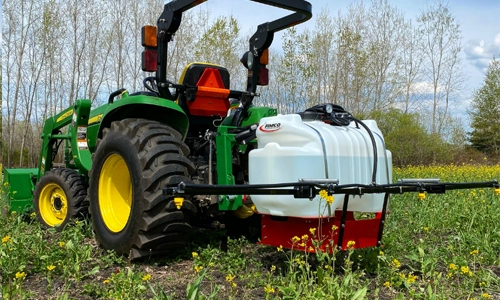
Once your planting area has been neutralized then, you are free to move to the next step; sowing the food plot seeds. If you had used prescribed fire then, this step can be done once the fire has died, embers have burnt out and the ground has cooled (we do not want to toast our seed). If you’ve chemically treated with standard glyphosate then, you can sow your seed as soon as the liquid application has dried. Standard glyphosate only works on the green matter of plants, like leaves and steams, therefore, does not have an effect on the seed itself. The only reason why you want to wait for the chemical treatment to dry before sowing seed is so that the seeds do not get wasted by getting stuck on to any wet leaves. Most folks will use a simple hand broadcaster, shoulder spreader, or a push/pull wagon spreader. Be sure to follow the recommended seed planting rate for your sowing method. There is a big difference between the planting rate for broadcasting when compared to the planting rate used with a seed drilling tractor attachment.
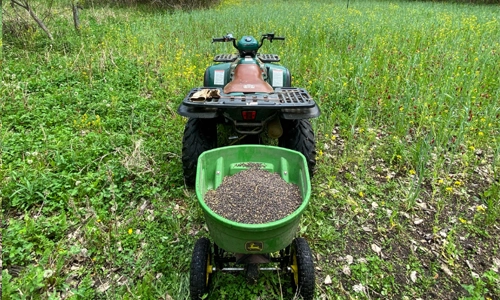
If you are battling a heavily weeded seed bed then we recommend using a buckwheat based food plot blend, such as our “Smashwheat Blend”, or pure buckwheat seed like our “About-A-Buck”. If weeds are not a huge issue then, pure soy beans (Crooked Bend “Magic Soy Beans”), pure iron clay cow peas (Crooked Bend “Cowpea”), pure sweet corn (Crooked Bend “Corn Maize”), and pure sunflowers (Crooked Bend “Sunflower Fields”) can be planted successfully. Seed blends containing these plant species (example: Crooked Bend “Basic Buck Blend”) are also very popular choices for spring food plot plantings in Michigan.
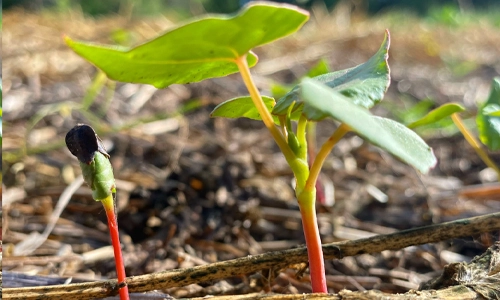
If you only remember one thing then, let it be this: the biggest key to the overall success of your food plot is planning your seed sowing date right before a really good rain. Ideally, there would be rain within twenty four hours after sowing your seed. Continued rain on a regular basis throughout the next couple of weeks will ensure that the young seedling plants become solidly established. Also note, if rain does not arrive after you have sown your seeds, don’t worry, they will not die. However, they will not begin to germinate and will leave the chance open to becoming a yummy snack for a hungry blue jay, turkey, or squirrel. Once the seeds do get rain and begin to germinate then, they release enzymes, making them less palatable to critters like birds and mice. As mentioned, spring and summer food plots can be planted up through June in the state of Michigan.
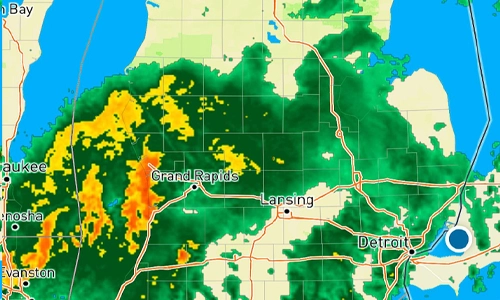
The end of June through the beginning of July can make for a great time to add the recommended soil amendments noted in your soil test results. Ideally, we want the food plot crops to be approximately six to eight inches tall before adding your fertilizer. This will deliver the jolt to your food plot’s soil food web when your plants are going into growing overdrive mode and need fuel the most. The month of July also provides a great chance to make any final hunting stand/blind adjustments, clean up shooting lanes and ensure your entrance and exit trails are clean, cleared, and quiet.
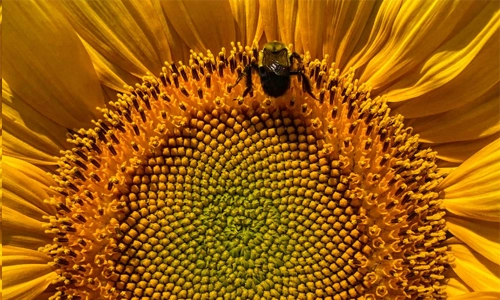
The third and final food plot seed sowing opportunity in Michigan starts at the beginning of August and will run until the end of September. A food plot sown and grown during this period of time is known as a “fall food plot”. Depending on the planting plan and execution, you can plant your fall food plot directly into an existing spring/summer food plot or you can establish a fresh plot in a brand new area. Using high quality food plot blends that contain a wide variety of hearty plant species (like Crooked Bend “Branson Buffalo Blend” or “Thunder Prairie Blend”) is a great way to promote soil health and get amazing results. Planting pure plant species like Crooked Bend’s purple top turnips, tillage radish, and sugar beets (“Dwights Beets”) are all other great options that your wildlife will absolutely love. In any case, the same exact steps are to be followed as was previously described for spring food plot planting; neutralize, sow, and water (rain).
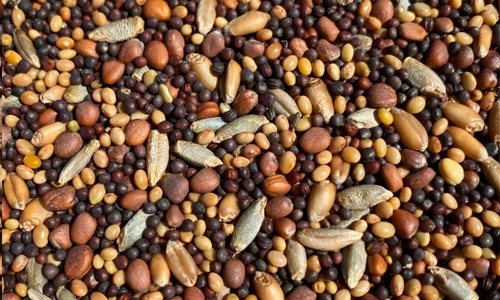
We will take this opportunity to discuss tilling and discing. Traditional planting methods have been proven true for many years and are still trusted by many to this day. If you are one of the many folks who opt to till your soil then there is some critical advice which will help you keep your food plot clean and not overrun with undesirable weeds. It is important to understand that there is an ancient seed bank that lies beneath the soil line which is made up of undesirable weed seeds. These weed seeds can be over fifty years old and still completely viable and ready to grow. They are just waiting to be risen to the proper germination depth to take their second chance at life and overthrow your food plots during prime time hunting season. When we run a tiller through our soil, we turn up or flip these old weeds into the germination zone. As this is the case, do NOT neutralize your food plot area before you till or disc it! Rather, wait at least fourteen days after you till and then neutralize your growing zone. This will give any of the ancient weed seeds that were flipped up to have a chance to germinate and grow. Then, you can terminate the weed seedlings by means of chemical applications or prescribed fire treatments.
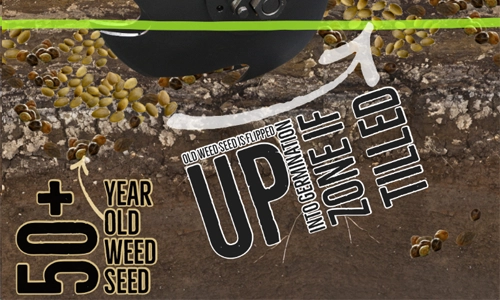
After the tilled area is neutralized then, your food plot seeds can be safely sown directly into your sterilized soil bed. After your seed is broadcast, do NOT disturb the soil any more by using a harrow or chain drag. This will only open up the risk of disturbing more old weed seed and triggering germination. The rain that Mother Nature provides will be more than enough to push the seed further into the soil and ensuring that seed to soil contact is made. Hopefully, the month of September brings regular rain to promote well developed fall food plots. Middle September hosts the opening of Michigan fall turkey hunting season, and as in the spring, a clover food plot would come in very handy.

With the arrival of the month of October comes also the start of whitetail deer archery season in Michigan. Hopefully, your plots are thick, green and growing to their full potential at this time. However, if any bare spots exist in your food plot area then, you can fill in these holes by over-seeding them with cold hearty cereal grains such as Crooked Bend “Last Resort”. Aside from touching up some food plot patchwork, the month of October should be reserved for archery deer season and enjoying the outdoor natural beauty that pure Michigan has to offer.
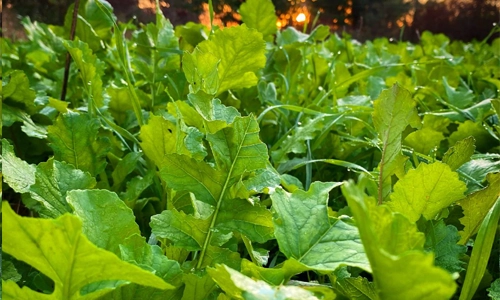
The months of November and December usher in the sacred Michigan whitetail deer firearm season, muzzleloader season and the closing of fall turkey hunting season. There is no food plot maintenance input required during these months. Rather, any time outdoors should be spent in a hunting blind, with your favorite firearm, and the high hopes of harvesting a trophy. The sweat equity put in your food plots previously throughout the year should have paid itself of multiple times with the fresh protein provided for your family’s freezer and the memories made while being out in Mother Nature. Kick back, crack open a cold one, and bask in the glory of your Michigan food plot success. Then, get ready to repeat it all again next year…(in one month).
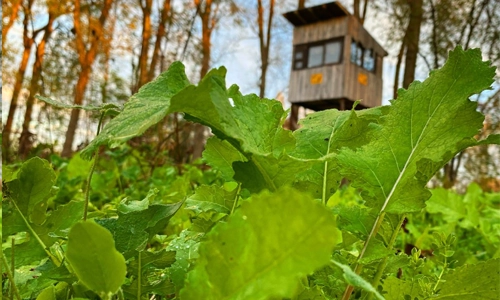
Overall, planting food plots in Michigan is restricted to a shorter growing season but it is still incredibly fun for the entire family, extremely effective, and easy enough for even a lazy person to complete. Always remember to love your herd and plant high quality Crooked Bend wildlife food plot seed blends which are specifically designed for these shortened Michigan growing seasons. We hope that you find the time to go outside to plant some food plots, hunt some wild game, cook up some delicious meals with your harvests, and pass on the love and passion for the great outdoors on to a younger generation.
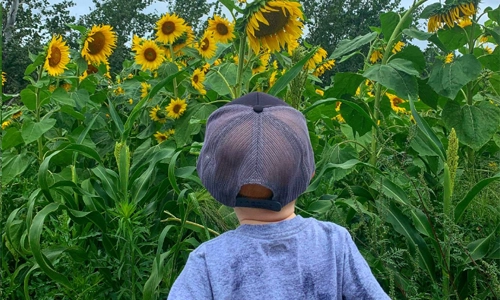
Get In Touch
11076 Norman Rd., Brockway, Michigan, 48097, USA
Quick Links
Copyright © 2025 Crooked Bend. Website by JZ Internet
 Prev Post
Prev Post




